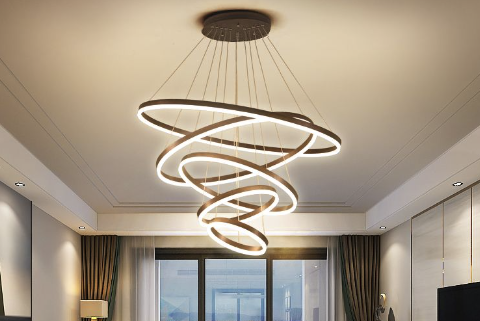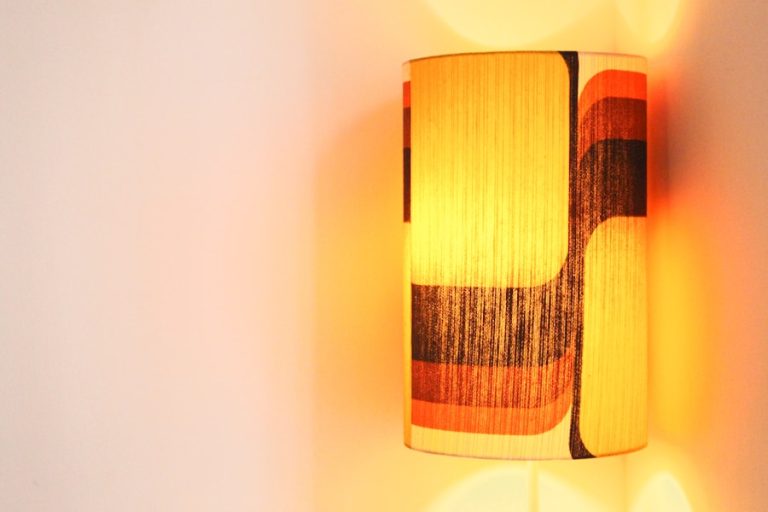The significance of proper study lighting cannot be overstated, as it plays a crucial role in enhancing focus, productivity, and overall well-being during study sessions. Adequate lighting not only illuminates the workspace but also sets the mood for concentration and learning. Poor lighting can lead to distractions, making it difficult to maintain attention on tasks at hand.
Furthermore, the right lighting can help create a comfortable environment that encourages longer study periods without fatigue. In an age where students and professionals alike are often required to engage in extended periods of reading, writing, or digital work, the importance of a well-lit study area becomes even more pronounced. Moreover, the psychological effects of lighting should not be overlooked.
Natural light, for instance, has been shown to improve mood and cognitive function, while harsh artificial lighting Nushliving can lead to feelings of irritability and discomfort. The right study lighting can foster a sense of calm and focus, which is essential for effective learning. By creating an environment that is conducive to studying, individuals can enhance their retention of information and overall academic performance.
Thus, investing time and resources into establishing proper study lighting is not merely a matter of aesthetics; it is a fundamental aspect of creating an effective learning environment.
Factors to Consider When Choosing Study Lighting
Choosing the Right Study Lighting
When selecting study lighting, several factors must be taken into account to ensure that the chosen setup meets individual needs and preferences. One of the primary considerations is the type of tasks being performed. For instance, reading and writing require different levels of brightness and types of light than activities such as computer work or drawing. Understanding the specific requirements of each task can guide the selection process, ensuring that the lighting enhances rather than hinders productivity.
Study Area Size and Layout Considerations
The size and layout of the study area play a significant role in determining the most suitable lighting options. A small room may benefit from brighter lights to create an illusion of space, while larger areas might require multiple light sources to ensure even illumination. This consideration can greatly impact the overall ambiance and functionality of the study space.
Color Temperature and Its Effects
Another critical factor is the color temperature of the light. Light can be categorized into warm, neutral, and cool tones, each affecting mood and concentration differently. Warm light tends to create a cozy atmosphere that is ideal for relaxation but may not be optimal for intense study sessions. Conversely, cool light mimics daylight and can enhance alertness and focus, making it more suitable for prolonged periods of study.
Personal Preferences and Comfort
Additionally, personal preferences regarding brightness levels and light placement should also be considered. Some individuals may prefer direct overhead lighting, while others might find task lamps more effective for focused work. By carefully evaluating these factors, one can select study lighting that not only meets functional needs but also aligns with personal comfort.
Types of Study Lighting Options
There are various types of study lighting options available, each serving distinct purposes and catering to different preferences. Ambient lighting is one of the most common forms, providing general illumination throughout a room. This type of lighting is essential for creating a well-lit environment but should be complemented by task lighting for specific activities.
Task lighting includes desk lamps or adjustable fixtures that focus light directly on work areas, allowing for greater visibility when reading or writing. These lamps often come with features such as adjustable brightness levels and color temperatures, enabling users to customize their lighting experience based on their needs. Another popular option is accent lighting, which adds visual interest to a study space while also providing additional illumination.
This type of lighting can include wall sconces or decorative lamps that highlight specific areas or objects within the room. While accent lighting is not primarily intended for studying, it can enhance the overall ambiance and make the space more inviting. Additionally, natural light should not be overlooked; incorporating windows or skylights into a study area can significantly improve mood and productivity.
By utilizing a combination of ambient, task, accent, and natural light sources, individuals can create a versatile and effective study environment tailored to their unique requirements.
Best Lighting for Different Study Environments
The best lighting for different study environments varies based on several factors, including the nature of the work being done and the physical characteristics of the space itself. For instance, in a home office setting where extended hours are spent on tasks such as writing or research, a combination of ambient and task lighting is ideal. A well-placed desk lamp with adjustable brightness can provide focused light for detailed work while ambient fixtures ensure that the entire room remains adequately lit.
Additionally, incorporating natural light through windows can enhance mood and reduce eye strain during long study sessions. In contrast, library or communal study spaces may require different considerations. These environments often benefit from uniform ambient lighting that minimizes shadows and glare while allowing multiple individuals to work simultaneously without distraction.
Adjustable task lights at individual study stations can further enhance focus by providing personalized illumination tailored to each user’s preferences. Furthermore, in environments where digital devices are frequently used, such as computer labs or study lounges, it is essential to choose lighting that reduces glare on screens while still providing sufficient brightness for reading printed materials. By understanding the specific needs of various study environments, individuals can select appropriate lighting solutions that promote productivity and comfort.
How to Avoid Eye Strain with the Right Study Lighting
Eye strain is a common issue faced by students and professionals alike, particularly during prolonged periods of reading or screen time. One effective way to mitigate this discomfort is by ensuring that study lighting is appropriately set up to reduce glare and harsh contrasts. Positioning light sources correctly is crucial; for instance, overhead lights should be placed in such a way that they do not create shadows on work surfaces or reflect off screens.
Additionally, using diffused light sources can help soften harsh brightness levels that often contribute to eye strain. Another important consideration is the color temperature of the light being used. Warmer tones are generally easier on the eyes during extended study sessions compared to cooler tones that may cause fatigue over time.
It is also advisable to take regular breaks from focused tasks to give the eyes a chance to rest; following the 20-20-20 rule—looking at something 20 feet away for 20 seconds every 20 minutes—can significantly reduce eye strain. By combining thoughtful lighting choices with regular breaks and proper ergonomics in workspace design, individuals can create an environment that minimizes discomfort and promotes sustained focus.
Energy Efficient Study Lighting Options
LED Lights: A Leading Energy-Efficient Option
LED lights are at the forefront of this movement due to their low energy consumption and long lifespan compared to traditional incandescent bulbs. Not only do LEDs use significantly less electricity—up to 80% less—but they also produce less heat, making them safer and more comfortable for extended use in study environments.
Customizable and Energy-Efficient Options
Furthermore, many LED options come with adjustable brightness settings and color temperatures, allowing users to customize their lighting experience while still being mindful of energy usage. Another energy-efficient option includes compact fluorescent lamps (CFLs), which also consume less power than traditional bulbs while providing adequate illumination for study spaces. While they may take a moment to reach full brightness, CFLs are an excellent choice for those looking to reduce their carbon footprint without sacrificing quality lighting.
Smart Lighting Systems for Enhanced Energy Efficiency
Additionally, incorporating smart lighting systems that allow users to control brightness levels remotely or set timers can further enhance energy efficiency in study areas. By choosing energy-efficient lighting solutions, individuals not only contribute positively to environmental sustainability but also enjoy reduced electricity bills over time.
Tips for Setting Up the Perfect Study Lighting
Setting up the perfect study lighting involves careful planning and consideration of various elements within the workspace. First and foremost, assess the layout of your study area; ensure that light sources are positioned strategically to minimize shadows and glare on work surfaces. A desk lamp with an adjustable arm can provide focused illumination where it’s needed most while allowing flexibility in positioning as tasks change throughout the day.
Additionally, consider layering different types of lighting—ambient lights combined with task lamps—to create a well-rounded environment that caters to various activities. Another essential tip is to take advantage of natural light whenever possible. Positioning your desk near a window can provide ample daylight during daytime hours; however, be mindful of glare on screens or reflective surfaces that could hinder productivity.
Using sheer curtains or blinds can help diffuse harsh sunlight while still allowing natural light into the space. Finally, don’t forget about personal preferences; experimenting with different color temperatures and brightness levels can help you find what works best for your unique studying style. By thoughtfully setting up your study lighting with these tips in mind, you can create an inviting atmosphere conducive to learning.
Finding the Right Study Lighting for You
In conclusion, finding the right study lighting is an essential aspect of creating an effective learning environment tailored to individual needs and preferences. The importance of proper lighting cannot be understated; it influences focus, productivity, and overall comfort during study sessions. By considering factors such as task requirements, room layout, and personal preferences regarding brightness and color temperature, individuals can make informed decisions about their lighting choices.
Ultimately, whether opting for energy-efficient LEDs or utilizing natural light sources, the goal should be to create a space that fosters concentration while minimizing discomfort such as eye strain. With thoughtful planning and experimentation with different types of lighting options available today, anyone can establish a study area that not only enhances productivity but also promotes well-being during those crucial hours of learning and growth.











+ There are no comments
Add yours